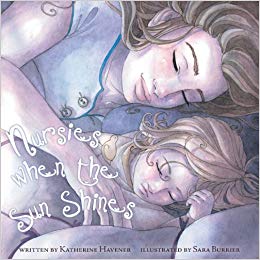

When I first decided to try and night wean my little girl, she was 14 months old, fed frequently and along with being utterly exhausted, I was feeling pretty touched out. Alex had always fed continually throughout the day – firstly due to tongue tie then partially I suspect as a result of her allergy and reflux.
If you’re thinking of night weaning, it’s not recommended to do so before six months as baby still very much needs those night feeds. You should also only do so if baby’s weight gain is good and they’re not ill or teething. It’s quite difficult to gently wean a baby so young due do lack of understanding and you do need to be mindful that if you don’t reduce feeds gradually, you could suffer blocked ducts or mastitis.
Why I Decided to Night Wean
When I returned to work part time when my little girl was 13 months old she would happily go without milk until I came home but as soon as I was there, the first thing she would ask for was a feed. Add into that the sleep regression she seemed to start to go through just before she hit her first birthday, her general unwillingness to have her nails trimmed or to stop scratching me and I was finding breastfeeding really difficult.
However, after a really shaky start, I was so proud to have made it so far and wasn’t ready to end our journey. Plus, breastfeeding is recommended up to age two, particularly for children with allergies. So, what could I do? I spoke to other mums in the know and quickly learned that it didn’t need to be all or nothing – night weaning was another possibility. And so I set about learning how to night wean my breastfed co-sleeping toddler. Here’s how it went…
Methods for Night Weaning from Breastfeeding
I started to read around night weaning – like you probably are – and started to way up the different methods and options. It was very important to me that whatever technique I used was as gentle as possible. I was conscious that breastfeeding had been a huge comfort to Alex when she was unwell and ‘colicky’ and so she was understandably attached.
Going cold turkey would not only upset us both but would put me at risk of mastitis too, which is something I really didn’t want to add into the mix. I was also very aware that night weaning might not necessarily help us get more sleep. I was more than a little concerned I might take away my only guaranteed way of getting her back to sleep nice and quickly!
At this stage my toddler would wake anywhere between four and six times each night. I read advice from Sarah Ockwell Smith, which advises gradually introducing sleeping comforters and cues to help little ones to transition so they go back to sleep without feeding. As we’d already introduced a comfort toy for feeding and night time, I didn’t think this would work for us.
I also looked into the Jay Gordon method, which involves changing your night time and waking routine so that you gradually put the child down after nursing to not nursing, over around ten days. I know lots of mummies who have had success with this one, but it didn’t feel like a good fit for us.

Instead, I decided to use a book called Nursies When the Sun Shines*, which was recommended to me by a La Leche League leader. There is guidance at the back of the book on how to introduce the story as part of the night time routine so that your toddler gets used to the idea that breastfeeding is for the day time so mummy can sleep at night.
The story is geared towards co-sleeping children and has lovely illustrations. We still read it sometimes now. Unfortunately, even after reading the book for several weeks, the first time I tried to night wean, Alex clearly wasn’t ready. It made her too upset for us to carry on and when night weaning doesn’t work, I thought it sensible to revisit it later on.
Crucially, Alex had very good levels of understanding and communication at this point and so I  decided around four weeks later to try again. I probably read the book for around 3 weeks each night before explaining we wouldn’t be feeding through the night any more.
decided around four weeks later to try again. I probably read the book for around 3 weeks each night before explaining we wouldn’t be feeding through the night any more.
I ditched my usual vest tops for bedtime and wore T-shirts so it was a little more difficult for her to get at the boobs. And this time, I purchased, set up and introduced a ‘sunshine clock’ also known as a Gro Clock*. If the sunshine is up, it’s daytime and feeding is okay, if it’s nighttime on the clock, it’s time for sleep. Luckily this time round Alex seemed to just get it.
The Reality of Night Weaning

She would have her usual bedtime feed and then if she woke she did fuss the first few nights for around five minutes but in my arms, soothed and without being inconsolable this time. She did cry a few times though and that was difficult, the book advises to stop if your little one does not start to settle relatively quickly and thankfully, this time round Alex did.
Soon she was happy to go back to sleep with a cuddle and kisses while holding my hand. Did she start sleeping through? Not immediately, no. She would still generally wake 1-2 times a night. This magical thing followed not long after though at around 18 months, when she generally stopped waking as long as she was co-sleeping in my bed and wasn’t unwell.
The biggest impact of night weaning for us wasn’t therefore a reduction in waking, but me generally feeling far less touched out and enjoying breastfeeding much more again. We’ve since moved on to limiting day feeds by firstly using don’t offer don’t refuse, timing feeds and then giving my little girl a set number of feeds to use up from waking to bedtime (first 4 now 3 – wake up, day feed, bed time). This works well for us as we both feel we have some control and nursing is very much a two-way relationship.
If you’re thinking of stopping breastfeeding, have you considered night weaning instead? For us it has made life so much easier and I’m really glad that once again other wise mummies were able to point me in the direction of something to help our situation.


.png)






.jpg)
